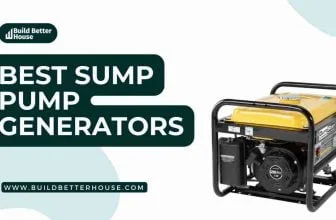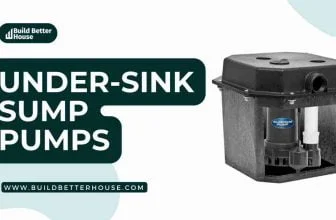Top 5 Water-Powered Sump Pump In 2023: [Tested & Reviewed]

Having a backup pump for any home or construction industry project is essential. Water-powered sump pumps are a significant investment for homeowners.
They can often be seen in homes, garages, sheds, and other outdoor structures to prevent flooding. A sump pump is not designed to last forever, so you must replace it every few years.
However, when a power outage strikes, they are essential for protecting your home from water damage and keeping it habitable until the power is restored.
In this guide, I will share the top 5 water-powered sump pumps, how they work, the advantages and disadvantages, the installation process, and a buying guide for water-powered sump pumps.
What Is a Water-Powered Sump Pump?
When your main sump pump malfunctions or there is a power outage during a heavy downpour, a water-powered backup sump pump helps keep your home dry. When this occurs, and water begins to rise above the primary pump’s float, it turns on automatically.
The water supply to your home will then begin flowing into the sump pump via the pump ejector, creating a powerful suction that removes the water safely.
Comparison Of Top 5 Water Powered Sump Pump
MODEL | FEATURES | COST | RATING |
Liberty SumpJet Water Powered Sump Pump | PVC material, Corded electric power source, Mechanical components | CHECK PRICE | 4.6 / 5 |
Zoeller 540-0005 Water Powered Sump Pump | Plastic material, Water power source, 20 gallons per minute (maximum flow rate) | CHECK PRICE | 4.3 / 5 |
Guardian 747H20 Water Powered Sump Pump | Plastic material, Ac/dc power source, 0.01 ounces weight | CHECK PRICE | 4.8 / 5 |
Basepump HB1000 Water Powered Sump Pump | Polypropylene material, Air powered source, 5 pounds weight | CHECK PRICE | 4.3 / 5 |
Basepump RB750 Water Powered Sump Pump | Polypropylene material, Battery powered source, 6 pounds weight | CHECK PRICE | 4.3 / 5 |
5 Best Water-Powered Sump Pumps For Your Home
Are you considering purchasing a water powered sump pump but need help deciding which model to pick?
Don’t worry; I’ve compiled a list of the top 5 water-powered backup sump pumps on the market to simplify your task.
You can count on these systems to keep your basement dry if needed in an emergency.
Liberty SumpJet Water Powered Sump Pump
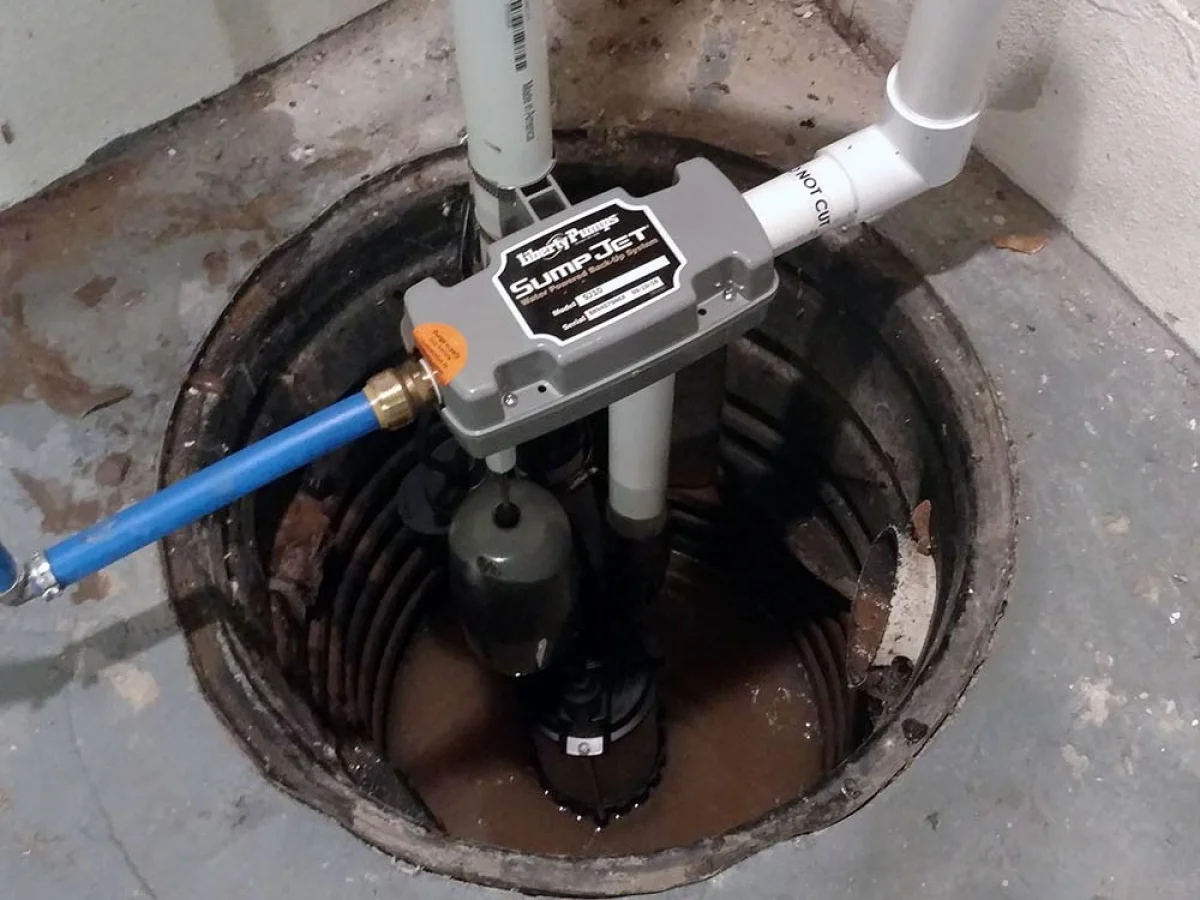
SPECIFICATIONS
- PVC material
- Corded electric power source
- Mechanical components
- 5 pounds weight
Liberty Pumps’ SumpJet is an excellent choice for residential and commercial installations. It’s a well-made, dependable, and effective pump that can manage high-volume flows and drain lots of water from your sump pit.
The system is simple to mount and install and requires less training. With its adjustable hose clamp and lack of an electrical component, the sumpJet can attach to any inlet pipe.
The SJ10 doesn’t need electricity as your municipal water supply powers it. Moreover, it also covers the typical Liberty 2-year warranty.
The SJ10 has a flow rate of up to 5 gallons per minute and can withstand inlet pressures of up to 100 PSI (GPM). The recommended maximum flow rate is 3 GPM, which can operate with a 5-foot lift.
Although it is a residential sump pump, it can withstand temperatures up to 130°F thanks to its sturdy PVC construction. The discharge is 1.5″ NPT, and the inlet has a built-in check valve to prevent water from flowing back into your home while the pump operates.
Reviews from customers:


Zoeller 540-0005 Water Powered Sump Pump
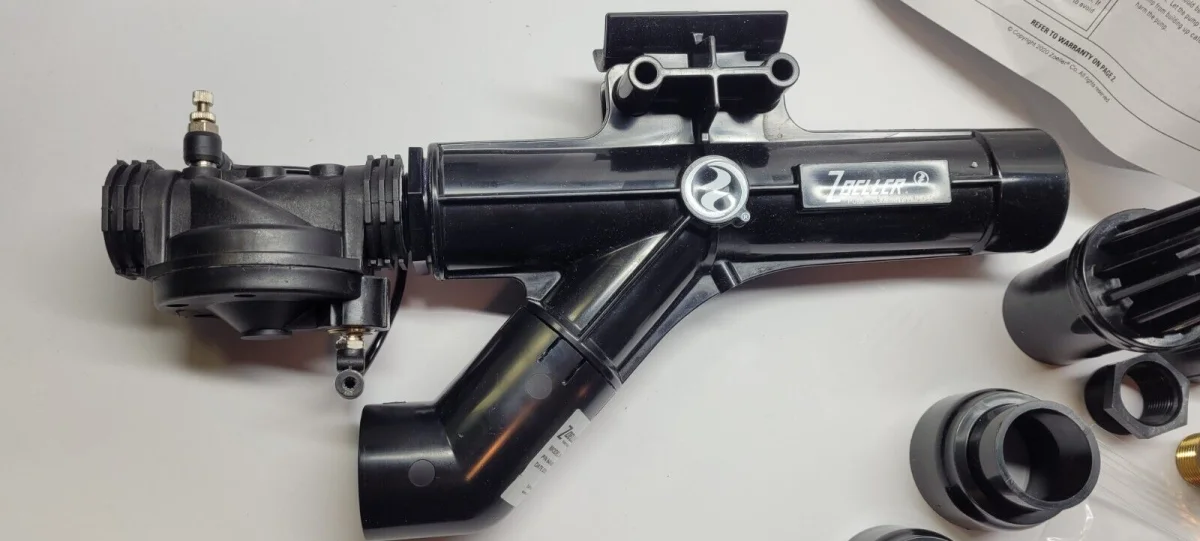
SPECIFICATIONS
- Plastic material
- Water power source
- 20 gallons per minute (maximum flow rate)
- 6.99 pounds weight
The Zoeller 540-0005 Sump Pump has a strong motor and delivers top-notch performance. This powerful pump performs well in all kinds of weather and can handle water pressure up to 80 psi.
This sump pump can pump more than 20 gallons of water per minute and can continue functioning even if the main power is off. This makes it the ideal product for house owners with ample crawl space or basements who want to keep their homes dry and safe in the event of a storm.
The system has a 3-year warranty that ensures it will function properly for a very long time and is of non-corrosive materials. The pump is simple and doesn’t require complicated wiring or other installation procedures.
Ultimately, the Zoeller 540-0005 Water Powered Backup Sump Pump is one of the excellent choices if you’re looking for a dependable and high-quality sump pump.
Reviews from customers:


Guardian 747H20 Water Powered Sump Pump
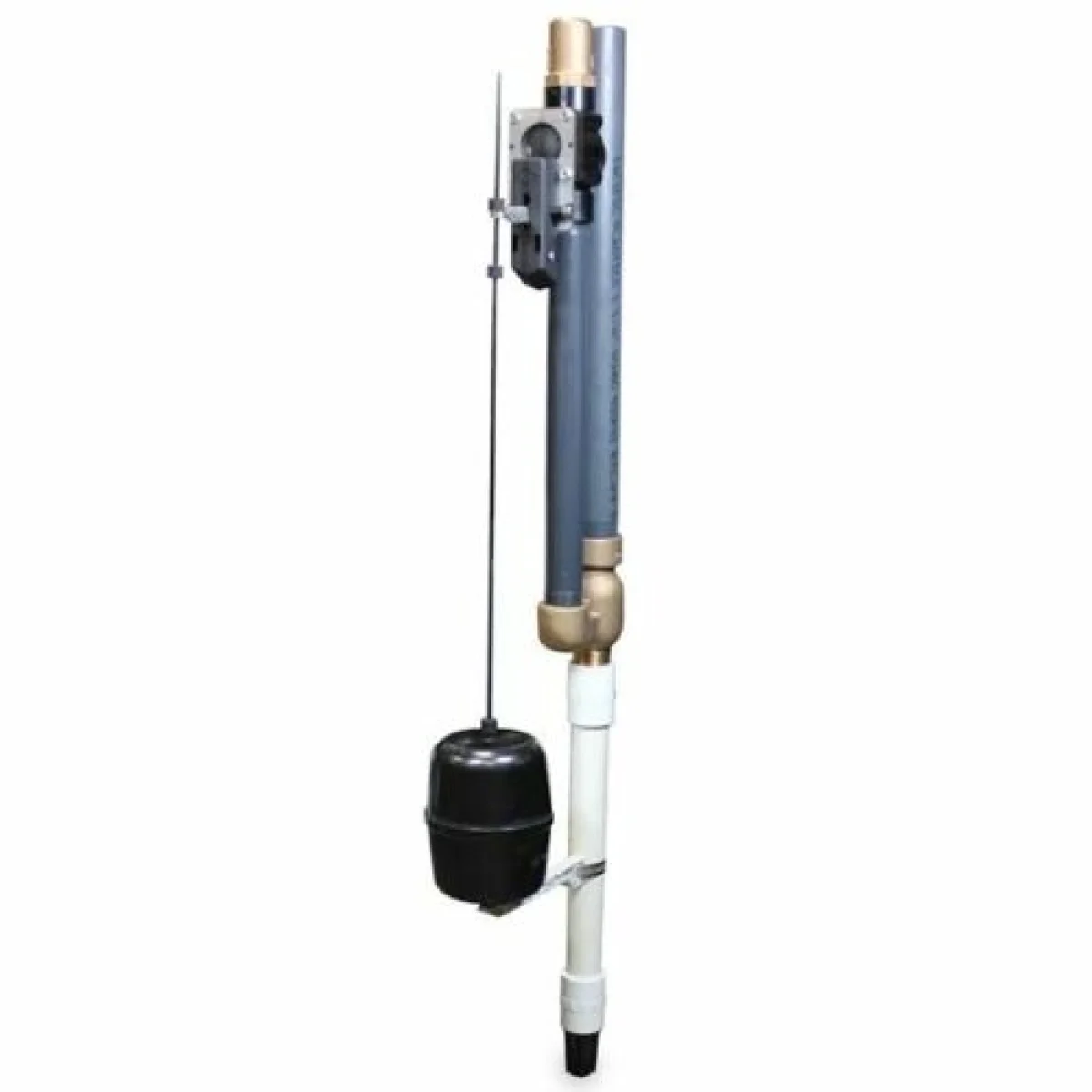
SPECIFICATIONS
- Plastic material
- Ac/dc power source
- 0.01 ounces weight
In a water emergency, the Guardian 747H20 water-powered backup sump pump is the ideal device to keep your home secure.
This device aims to ensure that all water drains out of your basement as quickly as possible during the initial stages of flooding.
The pump is made of high-quality brass and has a long lifespan due to its corrosion resistance. The unit can operate at pressures between 29 and 90 psi and has a flow rate of 10 gallons per minute.
The pump can run continuously for years with no issues. It does come with an inlet line, but it will eventually need to be replaced. This pump’s inlet line is 3/4 inches, so your sump pit’s drain pan may not work with it.
The Guardian 747H20 Sump Pump is an excellent option if you want a high-quality emergency water-powered sump pump for the least amount of money possible.
Reviews from customers:


Basepump HB1000 Water Powered Sump Pump
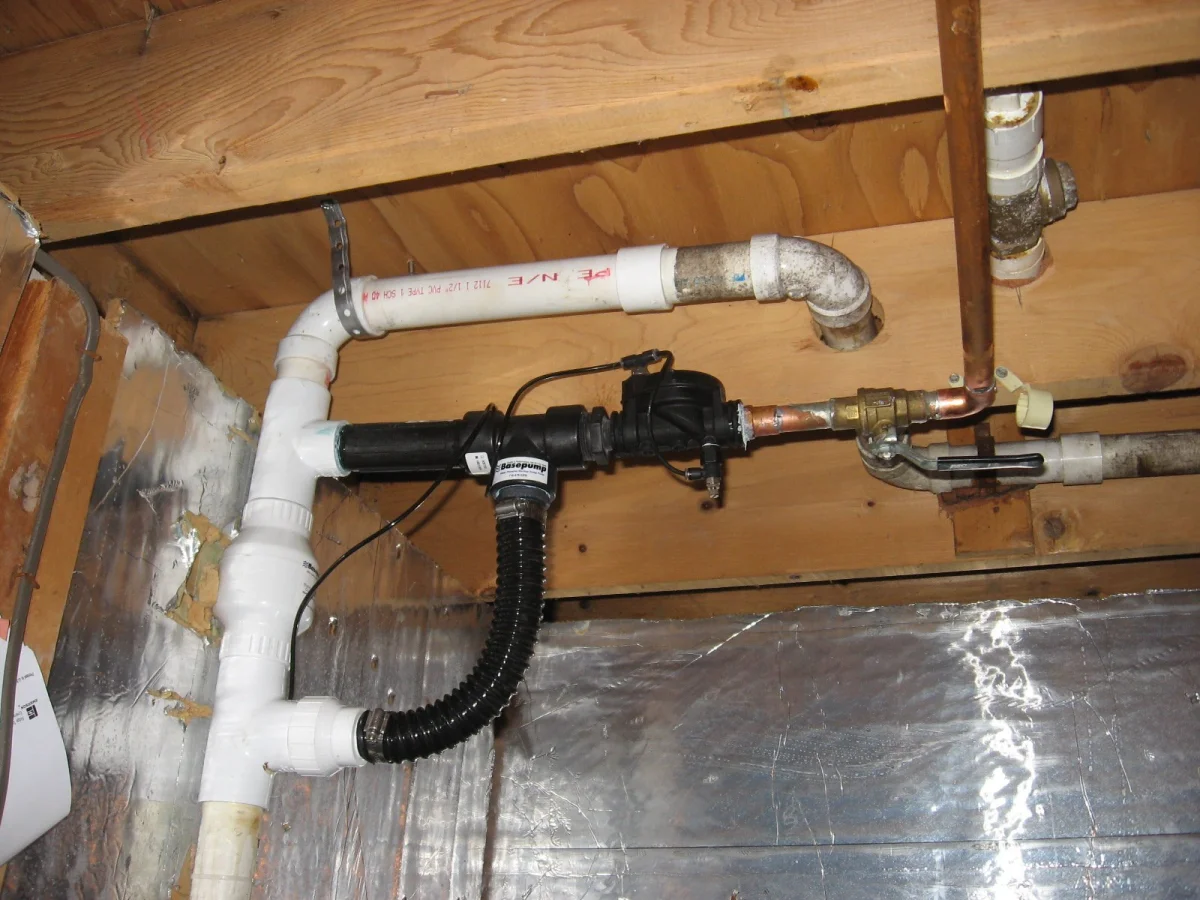
SPECIFICATIONS
- Polypropylene material
- Air powered source
- 5 pounds weight
- No maintenance required
- 23 gallons per minute (maximum flow rate)
If you live in a region with a high water table, you need a dependable pump that your family can rely on. The Basepump HB1000 is the most reliable water-powered sump pump available. This pump is simple to set up, easy to take care of, and has a battery-operated warning system.
If you reside in a flooding-prone region, such as the base of a hill or near a stream, it is essential to have a dependable backup pump to stop the potential for costly water damage. Homeowners looking for a reliable water-powered sump pump should consider the Basepump HB1000 as a great option that will not cause malfunctions or leaks.
This pump operates over 10 hours, making it an ideal selection for places frequently subjected to weather-related power outages.
Reviews from customers:


Basepump RB750 Water Powered Sump Pump
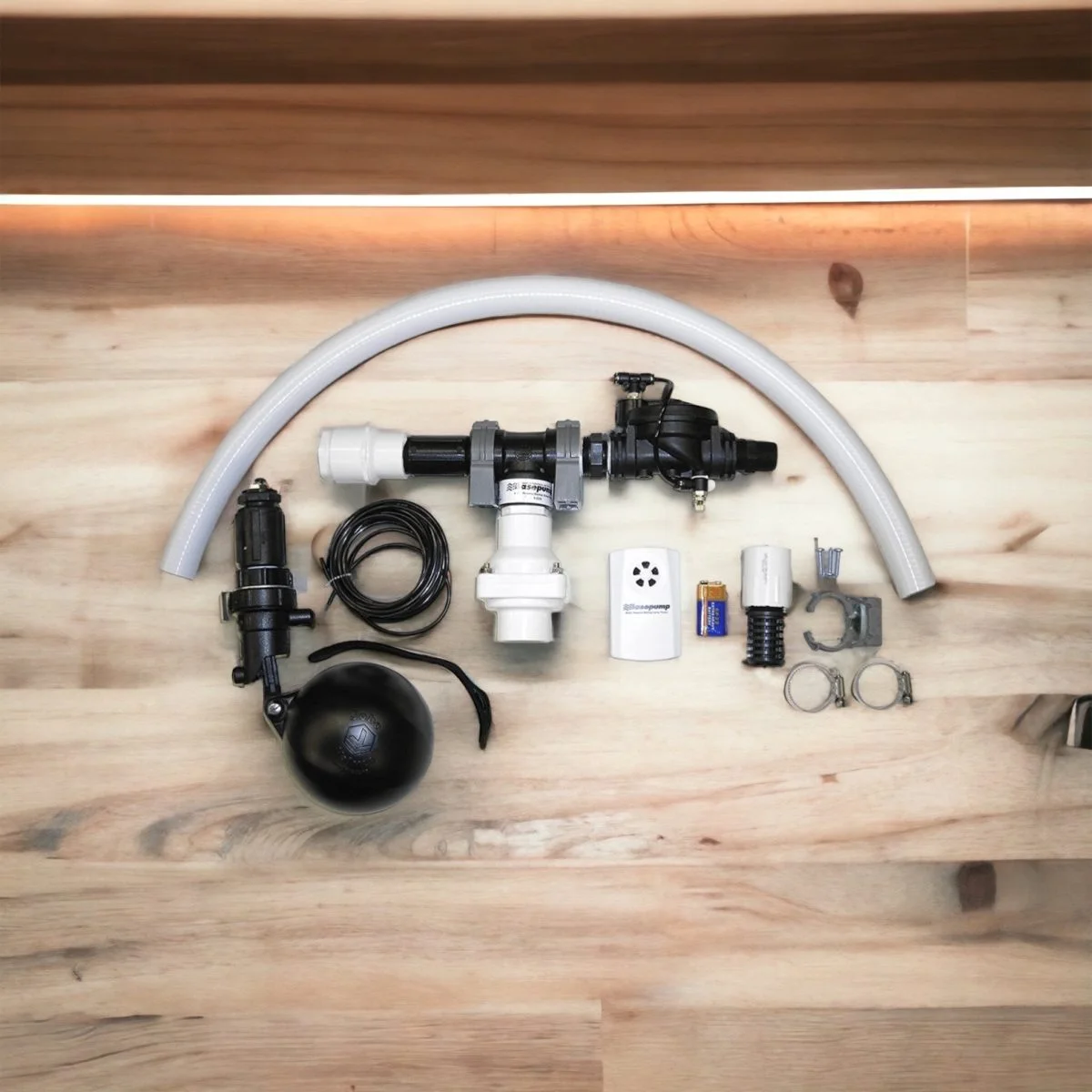
SPECIFICATIONS
- Polypropylene material
- Battery powered source
- 6 pounds weight
- 15 gallons per minute (maximum flow rate)
- No maintenance required
Basepump offers a dependable water-driven pump with an in-built battery-operated warning system to alert if there is a risk of flooding.
Homeowners looking for a backup pump with a built-in alarm system often opt for the Basepump 750. This system is situated over the sump hole and initiates when it notices the water levels increasing caused by pump breakdown or loss of electricity.
The pressure of the incoming water must be of a certain strength to ensure it can create water pressure. If the flow of the hose is too weak, it won’t be able to generate water pressure.
Reviews from customers:


How Does A Water Powered Sump Pump Work?
Water-powered sump pumps use the pressure of your home’s municipal water supply to create a strong vacuum that channels water up from your sump and discharges it outside your home.
An automatic valve/ejector jet unit and a float assembly make up the suction-generating pump in water-powered sump pumps —the pump links to your residence’s municipal water line, suction, and discharge pipe.
Your sump’s rising water level lifts the float, which triggers an automatic valve opening that lets city water pass through the pump’s ejector jet. A nozzle and chamber inside this jet transform the water pressure into a vacuum.
Like a vacuum pump, the low internal pressure results in a strong suction that quickly empties your sump pit as it is significantly lower than the atmospheric pressure outside.
Water Powered Sump Pump Vs. Battery-Powered Sump Pump
Both battery-powered and water-powered sump pumps aid in preventing water damage and keeping your basement dry, but how they accomplish this distinguishes them from one another.
Water-powered pumps use the power of water pressure to keep water out of your home. On the other hand, battery-powered backups, as the name suggests, use batteries to remove water from your sump pump and discharge it through a pipe that flows outside.
Water Powered Sump Pump Advantages
Water-powered sump pumps are popular among homeowners for several reasons.
1. Low Maintenance
The maintenance and replacement of water-powered sump pumps are not a big deal due to their relatively simple design. Moreover, the water-powered sump pump is simple to operate due to the lack of many moving parts.
However, you should test it periodically and carry out annual sump pump maintenance to ensure it will be functional when needed.
2. It Doesn’t Require Batteries
One of the great benefits of using a water-powered pump is that no batteries are needed; as such, you never have to worry about buying new ones or wonder if the ones already in place still work.
A battery-powered pump requires a new battery to operate every few years if it is not in use and is used even more frequently or if there are prolonged power outages.
3. Long-Lasting
A water-powered pump has a 10-year average life. However, you can also extend it up to 20 years by testing the system for malfunctions and regularly checking for leaks and odd noises.
For the best results, you should also carry out the sump pump maintenance procedure at least twice a year.
4. Reliable
These sump pumps use the municipal water pressure in your home to pump water out of your basement if your main pump breaks down. Therefore, they will keep pumping water out of your house if you can access it.
Battery-powered pumps can only run quickly before needing a new battery. Besides, not all of them operate continuously at the same frequency, which suggests that you may need to replace them if they start pumping less water.
Water-Powered Sump Pump Disadvantages
In addition to their advantages, water-powered sump pumps also have drawbacks.
1. Low Pumping Volume
Water-powered sump pumps have a lower pumping rate than other options. While battery-powered backups can remove up to 2,400 gallons of water per hour, on the other side, a water-powered sump pump can only remove 1,324 gallons of water per hour.
2. Need Constant High Water Pressure
For most homes, the recommended water pressure range for these sump pumps is between 40 and 60 psi. Therefore, if your water pressure is low, it might not completely drain the water from your basement.
Besides this, if the homeowner has a well, the water-powered sump pump won’t work since it only uses municipal water.
3. Can Raise Your Water Bill
Water-powered sump pumps may increase your water bill. They use roughly two gallons of your home’s water supply to pump out one gallon of sump water.
It might become quite expensive if it needs to run for a while. And if your water-powered sump pump continues to run without your knowledge, it could cost you more money.
4. Takes Drinkable Water
Many homeowners are more aware of their environmental impact due to the constant, unfavorable environmental changes. Since water-powered pumps need clean water to remove dirty water, many people choose the battery-powered option.
How To Install A Water-Powered Sump Pump?
Although installing a water-powered sump pump is more complex than installing a battery-powered one, it is still doable without hiring a professional plumber.
Reading the owner’s manual before installing any pump will give you detailed instructions on setting it up and operating it. Since every pump varies slightly, you must know how it works.
Step 1 – Getting Started
Installing a water-powered sump pump takes much time and requires breaking through concrete. Determine the location of your main water and sewer lines before you attempt to break through.
Before installing the pump, make sure the drainage around your home doesn’t have any external drainage issues, such as blocked gutters, by looking closely at the drainage system. For convenience and effectiveness, selecting the appropriate equipment is crucial. Select a suitable location for the sump pump to install.
Step 2 – Installing The Water Powered Sump Pump
Break out the concrete at the lowest point of the floor with the jackhammer. Ensure that the opening is near an exterior wall.
Make a section that is 6 inches wider than the pit liner. The depth of the pit must equal that of the liner. Place the liner in the pit and fill it with gravel. Then seal the space between the pit and the floor with concrete.
Create a hole that is the same diameter as the discharge pipe outside the wall. After inserting the caulking gun into the hole, caulk around the discharge pipe.
The pump’s electrical cords should be taped to the riser with vinyl electrical tape before the discharge fitting is connected and the pump is set into the pit’s bottom.
Place the pump so the float is a few inches away from the liner for simple and smooth movement. Attach the liner lid over the riser.
Connect the discharge fitting to the discharge pipe on the exterior wall using PVC pipe. Then install the check valve between the discharge fitting and the PVC pipe. The check valve prevents overheating of your pump motor. Seal the connections between the pipes using PVC cement.
Step 3 – Testing
You can now test your pump since the installation is complete. Add 5 gallons of water to the liner to test the pump’s functionality. Frequently, especially before the rainy season, run the pump for a few minutes to ensure it is functioning correctly.
Once the water lifts the float, your pump should start working. The water-powered sump pump will be installed successfully without any problems if you carefully follow the steps above.
Buyer’s Guide – How To Choose A Water-Powered Sump Pump
Sump pumps can drain standing water from crawl spaces and basements. Choosing the proper type of sump pump and having a water-powered backup are both crucial.
Consider the following factors when selecting the ideal water-powered sump pump for you:
1. Size
The size of your basement must be considered when designing your sump pump, but its ability to withstand the force of your water supply is of utmost importance. The model you pick should handle the volume of water your sump pump will be able to remove.
It would be best if you had a sump pump that is large enough to handle the volume of water that is kept in your basement.
Most pumps rate according to the motor’s horsepower (HP) and cubic feet per minute (CFM) of airflow. The more horsepower and CFM a pump has, the more effective and powerful it is.
The “GPM” system, where GPM stands for gallons per minute, is the most popular rating system for sump pumps.
The GPM rate can be used to calculate the number of water pumps per minute.
2. Water Capacity
Sump pumps generally have a motor and a reasonably large tank for holding water. Channeling water into the sump pump’s reservoir removes water from the house.
The size of the tank influences a sump pump’s capacity to pump water.
3. Water Pressure
Sump pumps can fail for many reasons. Low water pressure is one of the common causes of sump pump failure. This is particularly true if you live in a city with little rainfall or your water system is under high pressure.
If you reside in one of these areas, you ought to buy a water pressure booster to raise water pressure.
4. Water Outlet
The outlet’s size is the most crucial factor when selecting a backup sump pump. A small outlet will be helpful if your basement is only a few feet deep. Nevertheless, a large outlet will be more appropriate if your basement is more profound.
Additionally, the depth of your water level will affect the outlet’s size. A more prominent outlet will be more suitable if the water level is only 3–4 feet deep.
5. Noise Level
The noise your sump pump makes when it fails can be pretty troubling. It can be very frightening when sump pumps make a loud clicking or whirring noise late at night.
However, there are some ways to minimize noise. Ensure your sump pit has enough airflow to keep the water inside first. A fan or an exhaust fan can be used for this, but it’s best to put it on a separate circuit.
Consider buying a sump pump with variable speed control. These can be lowered to reduce noise, which will be beneficial.
Tips For Troubleshooting And Maintaining Water Powered Sump Pump
You can take a few steps to examine and resolve the problem if your water-powered sump pump is not working. Here are tips to get you started:
1. The pump may require more power if it cannot draw water from the drainage system. By coupling the pump to a hose and turning on the water supply, you can check the suction power of the device. Consider adding a longer pipe or a more powerful motor to boost the suction power.
2. Verify that all connections are secure and that the pump is installed following the manufacturer’s instructions. Make any necessary repairs after checking for potential leaks near the pump.
3. By priming the pump with water and slowly releasing it into the drainage system, you can test the pump. After being primed, if water begins to leak from the pump, it probably needs lubrication or maintenance. Look for any clogs or obstructions in the drainage system, proper coupling, seal, and hose installation.
4. Check for clogged-up sediment in filters and trap arms since this can eventually result in ineffective pumping performance: regularly clean filters and traps with the proper fluids or mechanical means.
For the proper functioning of your pump, take into account the points mentioned above. However, it would be better to call a professional for assistance if it still needs to be fixed.
Frequently Asked Questions On Water Powered Sump Pump:
1. How much does a water-powered sump pump cost?
A water-powered sump pump’s cost varies greatly and depends on several factors. With installation, most pumps cost between $100 and $300. The price increases with the number of features, functions, and gallons per hour (GPH).
2. How to pick a reliable sump pump?
The sump pumps that intend to release water in the event of a flood are the best for homes. The ideal home sump pumps should be simple to use, handle larger volumes of water, and have a long lifespan.
3. Can I use a water-powered sump pump for irrigation?
Yes, you can use a water-powered sump pump for irrigation. There is no issue using water pumps for such a task since they can operate with electricity and water pressure.
Conclusion: Water-Powered Sump Pump
Water-powered sump pumps are one of the best ways to manage the water rising in the pit of your primary sump pump. Water-powered sumps prevent flooding in a home or other building during heavy rains or snowmelt.
For me, Liberty Pumps’ SumpJet is the best water-powered sump pump in the market due to its fantastic features. You can choose the best option for your home according to your budget and needs from the list mentioned above.
Read my buying guide and installation process to install your new sump pump. I also suggest following the maintenance tips to keep your water-powered sump pump in better condition.

![Top 5 Water-Powered Sump Pump In 2023: [Tested & Reviewed]](https://buildbetterhouse.com/wp-content/uploads/thumbs_dir/BBH-Blog-Banner-3-q0c5nj23kp03ybodtehecvrk53dunrdp9qr464f4fw.jpg)
![Top 5 Water-Powered Sump Pump In 2023: [Tested & Reviewed]](https://buildbetterhouse.com/wp-content/uploads/thumbs_dir/BBH-Blog-Banner-40-q0buhstanr2dxz7lmr3jp99gangewqjlddaeas2fr0.jpg)
